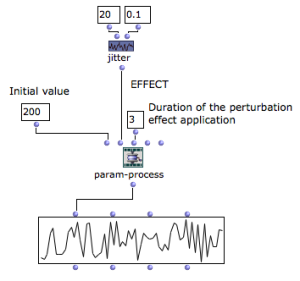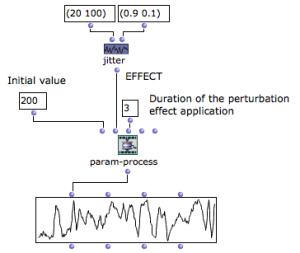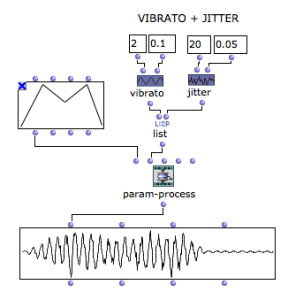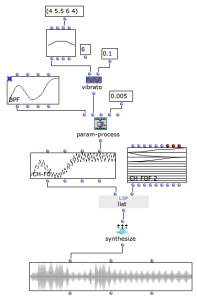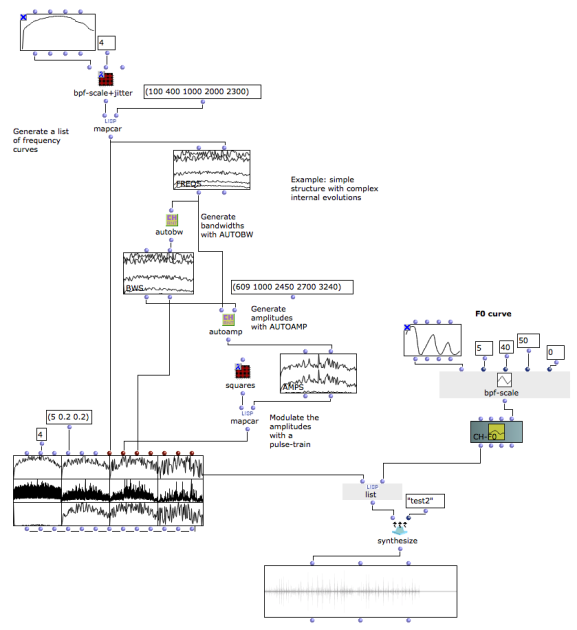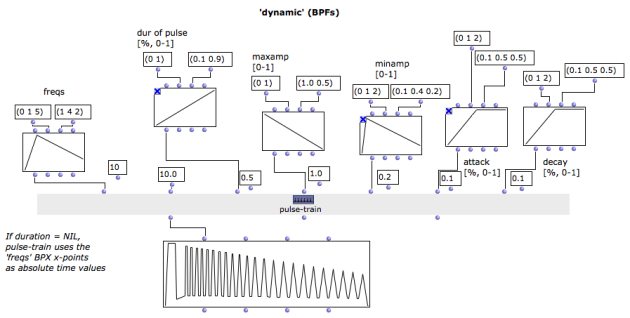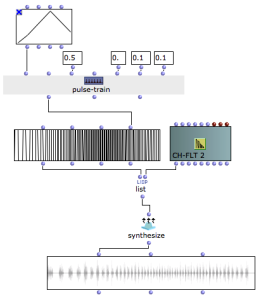Modulating Effects
Different tools in OM allow for the generation of continuous controllers suitable for the specification of parameters in OM-Chant events. The outputs of the following generators are BPFs which can be connected to the OM-Chant just as described in the previous sections.
PARAM-PROCESS (Vibrato, Jitter)
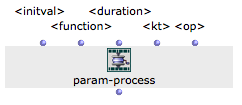
The function PARAM-PROCESS modulates an input parameter (<initval> = constant value or BPF) with a combination of vibrato (sinusoidal modulation) and/or jitter (random perturbation) effects (<function>). Both jitter and vibrato are determined by a frequency <freq> and amplitude <amp>. They are applied to generate a controller of length <duration>, modulating <initval> at rate <kt> (optional), either by addition or multiplication (<op>).
<kt> is not used with Jitter effects. The resolution of depends on the Jitter frequency[-ies].
Applied on BPFs, the jitter perturbates the curves at each time determined by the frequencies.
The following example also illustrates the difference between modulating by addition (‘a' = addition of initial value * amp to the initial value) and by multiplication (‘m' = multiplication of the initial value by amp).
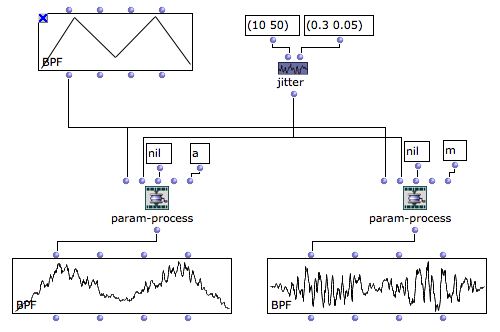
When <initial-value> is a BPF and <duration> is NIL, the original BPF duration is preserved. Otherwise the effect(s) apply during the specified duration.
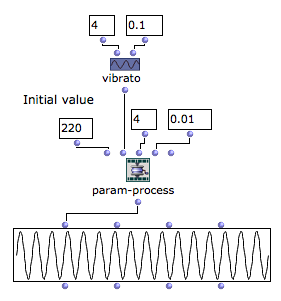
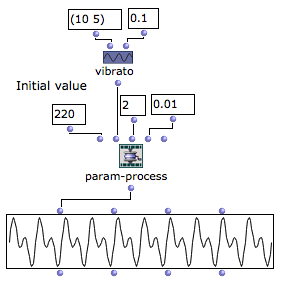
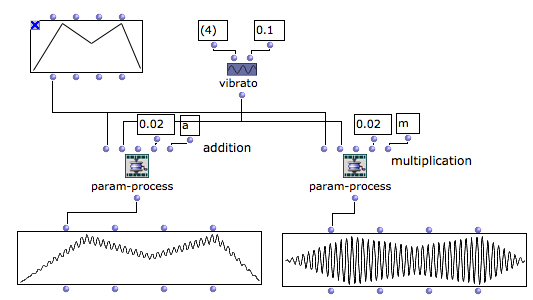
With the VIBRATO effect the control rate <kt> has to be specified, otherwise OM will automatically choose one corresponding to the smallest possible value to avoid spectral aliasing.
Effects themselves can have their parameters (freq, amp) varying over time. In this case, the frequency and amplitudes must be specified as BPFs [time (sec.) / value]. In the next examples the frequencies raise while the amplitudes of the effects decrease.
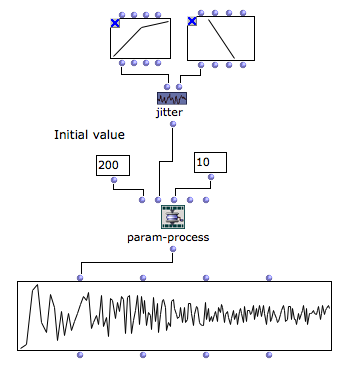
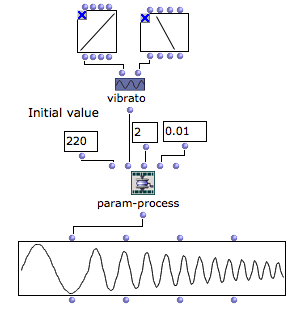
Pulse train
In certain cases it will be useful to generate a pulse train as a continuous specification for a given Chant parameter. The function PULSE-TRAIN provides a great flexibility to generate such controller:
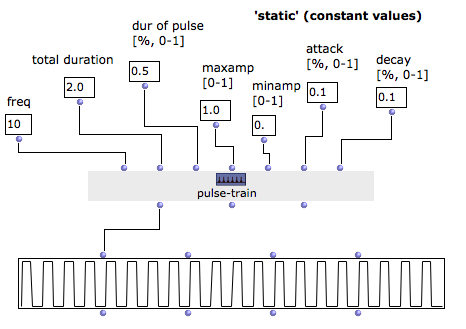
Use d to see the PULSE-TRAIN reference page and get a complete description of the parameters.
